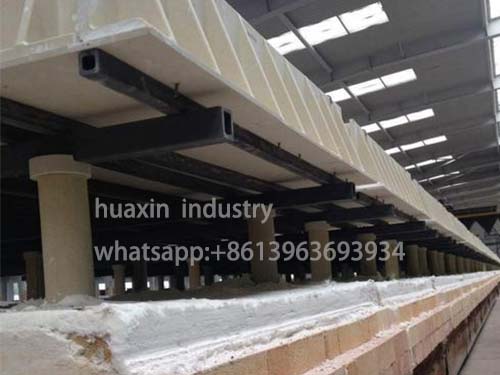Silicon carbide kiln furniture is widely used in various high-temperature industrial applications, including kilns, furnaces, and reactors. Its exceptional thermal stability, high strength, and excellent chemical resistance make it an ideal material
for these demanding environments. However, understanding the service life of silicon carbide kiln furniture is crucial for optimizing its usage and minimizing maintenance costs. This article aims to explore the factors affecting the service life
of silicon carbide kiln furniture and provide insights into extending its longevity.

Factors Affecting Service Life:
1. Material Composition:
Silicon carbide kiln furniture is available in different types, including reaction bonded silicon carbide (RBSC) and nitride bonded silicon carbide (NBSC). The material composition plays a significant role in determining the service life. RBSC,
with its high silicon content and dense microstructure, offers superior thermal shock resistance and longer service life compared to NBSC. Therefore, choosing the right material composition is crucial for maximizing the kiln furniture's longevity.
2. Kiln Atmosphere:
The kiln atmosphere greatly impacts the service life of silicon carbide kiln furniture. Oxidizing atmospheres, such as those containing oxygen or water vapor, can lead to the formation of a silica layer on the kiln furniture's surface. This layer
acts as a protective barrier, reducing the material's chemical reactivity and extending its service life. On the other hand, reducing atmospheres, with low oxygen content, can cause the formation of carbides, leading to material degradation
and reduced service life. Therefore, maintaining a suitable kiln atmosphere is essential for maximizing the longevity of silicon carbide kiln furniture.
3. Thermal Cycling:
Silicon carbide kiln furniture is subjected to frequent thermal cycling, with rapid heating and cooling during kiln operations. This thermal stress can cause microcracks and thermal shock, leading to premature failure. Proper kiln design,
including uniform heating and cooling rates, can help minimize thermal stress and prolong the service life of the kiln furniture. Additionally, using kiln furniture with higher thermal shock resistance, such as RBSC, can enhance its longevity
under thermal cycling conditions.
4. Mechanical Stress:
Mechanical stress, such as load-bearing or impact forces, can also affect the service life of silicon carbide kiln furniture. Excessive mechanical stress can lead to cracks, fractures, or deformation, reducing the material's strength and lifespan.
Proper handling and installation techniques, including evenly distributing the load and avoiding sudden impacts, can help mitigate mechanical stress and prolong the kiln furniture's service life.
Silicon carbide kiln furniture offers excellent performance in high-temperature applications, thanks to its exceptional thermal stability and chemical resistance. Understanding the factors affecting its service life, such as material composition,
kiln atmosphere, thermal cycling, and mechanical stress, is crucial for optimizing its usage. By considering these factors and implementing appropriate measures, such as using RBSC, maintaining suitable kiln atmospheres, and minimizing
thermal and mechanical stress, the service life of silicon carbide kiln furniture can be extended, reducing maintenance costs and improving operational efficiency.












